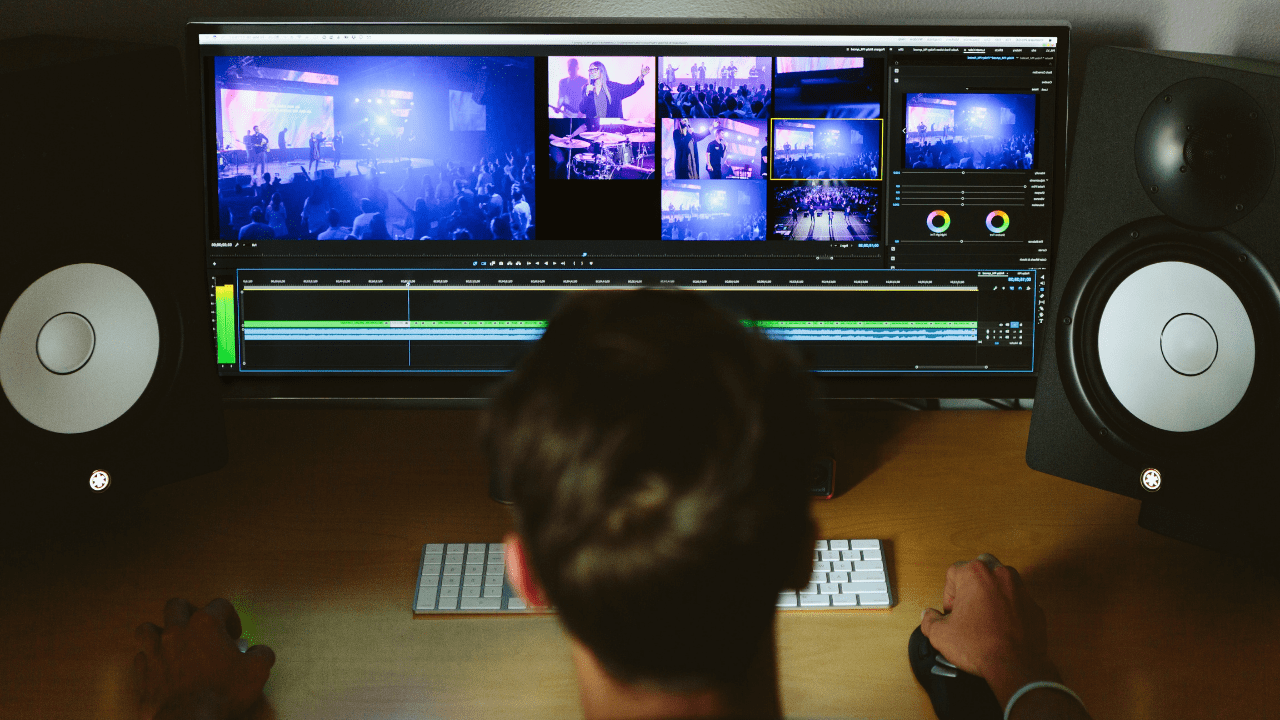
A “deep fake” typically refers to a video that has been edited to replace the person in the original video with someone else, commonly a public figure in a way that makes the video look entirely authentic. These are time consuming to make but can be very convincing.
Today’s guest is Lonnie Waugh. Lonnie is a web developer, software engineer, and deep fake creator. He has been doing deep fake videos for years with a sense of humor traditionally using the OneDuality on Instagram, TikTok, and YouTube.
““The deep fake technology has grown leaps and bounds in the last three years.” - Lonnie Waugh Share on XShow Notes:
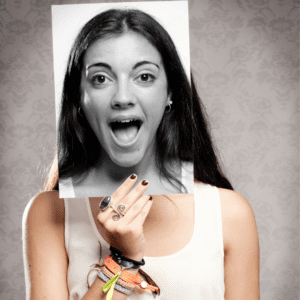
- [0:56] – Lonnie describes what a deep fake is and what he does for his YouTube channel to make things humorous.
- [1:52] – To accomplish this in the past, it was very extensive, but now can be done from home with the right equipment and software.
- [2:37] – The process to create something like this is very time consuming and Lonnie describes a frustration with rendering something and going back to edit.
- [3:32] – Lonnie outlines what this process looks like for him and why he chooses political conferences for a lot of his videos.
- [5:30] – In addition to finding all the movements needed for the face he’s using to replace the original, Lonnie also does some pre-processing. This isn’t necessary but he explains why he chooses to take the time to do it.
- [7:02] – The software used to do this is open source but not yet available for Mac.
- [8:18] – Because Lonnie has been doing this for so long, he knows what to look for to determine if the content is real or a deep fake, but points out that if you don’t know what to look for, it is easy to be fooled.
- [9:27] – Lonnie and Chris describe some of the little nuances and indicators that Lonnie can notice.
- [10:49] – Lonnie shares that he cannot monetize his YouTube channel because of the copyrighted content he uses so it is not worth his time to go back and fix some of the most minor indicators of it being fake.
- [11:12] – Lighting also makes things challenging and Lonnie shares an experience with a music video director not consulting a professional.
- [12:28] – Lonnie has created content for music videos and hopes to eventually create for commercials.
- [13:38] – Discussing the technical aspects of the process, Lonnie describes how many frames a creator should use and how the AI recognizes faces.
- [15:47] – There are different modes that creators can use.
- [16:23] – Because of copyrights, there are challenges to deep fakes when using obvious original videos.
- [17:21] – Politicians are typically in the public domain but celebrities and actors who have enough legal backing could find each video one by one and take them down.
- [17:57] – For those who are not celebrities or political figures, there’s likely not enough video content available for a deep fake to be made of them. Lonnie says it can be done with photos but thousands of photos would be needed.
- [18:51] – The quality of the video used is important as well.
- [19:47] – There is an app that can take photos and video and replace faces. To Lonnie they look good but are obviously not real. Some people may be fooled by them, though.
- [20:45] – At the moment it is not likely of someone creating a deep fake of someone with malicious intent unless there’s a lot of professionally done video content of them in all different kinds of lighting.
- [21:38] – Lonnie and Chris discuss the amount of work involved in creating a convincing deep fake of the average Joe.
- [22:29] – There is software that will use a single photo to impose onto a video but they are not convincing and are typically used for entertainment.
- [23:40] – In regards to romance scams, Chris shares that this could eventually be something used to create video content.
- [25:08] – Lonnie explains how another YouTuber has used clips to startle people.
- [26:09] – There is a lot of thought being put into this in the political world and will potentially be legislated in the future.
- [27:33] – While the technology can be abused, Lonnie has not yet seen it used in a dangerous way and says that the abuse of it is pretty predictable right now.
- [28:11] – Lonnie references a recent legal case that may have abused this type of technology.
Thanks for joining us on Easy Prey. Be sure to subscribe to our podcast on iTunes and leave a nice review.
Links and Resources:
- Podcast Web Page
- Facebook Page
- whatismyipaddress.com
- Easy Prey on Instagram
- Easy Prey on Twitter
- Easy Prey on LinkedIn
- Easy Prey on YouTube
- Easy Prey on Pinterest
- OneDuality on Instagram
- OneDuality on YouTube
- OneDuality on TikTok
- Schmoyoho on YouTube
Transcript:
I know you've got a YouTube channel where you've made a number of deepfakes recently and over the last—how many years has it been?
It’s two or three years, I think.
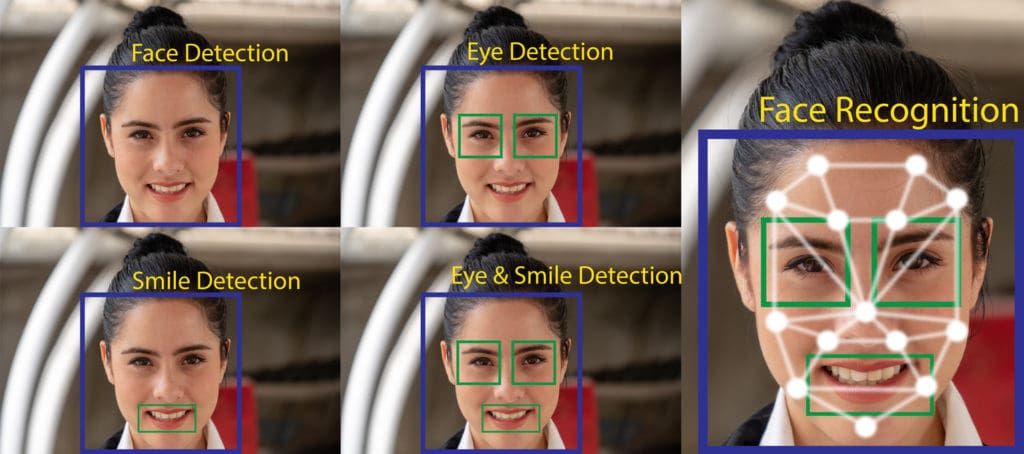
For the last couple of years. For the audience, who's not familiar, can you explain what a deepfake is?
A deepfake is—they’re pretty popular now. You'll see them. It's basically where you'll see a scene from a movie, or something like that, or a political speech. You'll see their face replaced with something else. In my case just to make it more humorous. I'll do a politician and I'll put Mr. Bean’s—Rowan Atkinson—face on top of it. Or I'll put a politician into the scene from Terminator or something like that. It's basically just using artificial intelligence to remap somebody else's face onto someone else's in a believable way.
I think 10 years ago this would have been in crate computers and in a facility. It sounds like people are actually able to start doing this sort of thing from their homes now.
They can. It's a bit of a process, but you need to have the right hardware, too. You have to have an Nvidia GPU. There is some software that will work with AMD hardware. But for the most part, Nvidia's got it just because the course is much faster and geared toward that artificial intelligence.
What is the total hardware that's needed for someone to be able to do this now?
I'm using a 20 ATTI, and that can still take days to get something decent-looking. If you want something to look really professional, it could take a week or two because there's a lot of revision. That's the most frustrating part is if you render this thing out, and then you find that you’ve got a blurred face or something here, you really kind of have to go through and find the frames that are causing that or find the section, maybe even reclip the section and start over again. But, yeah, a 20 ATTI is what I use. You can actually get lower than that. But I wouldn't advise it.
The key thing is a VRAM now. You can do it with as low as eight gigabytes of VRAM, but higher than that is better.
Can you go through what the process is, without getting too technical? What processes do you need? What kind of source materials do you need? What kind of videos do and don't work to be able to create a deepfake?
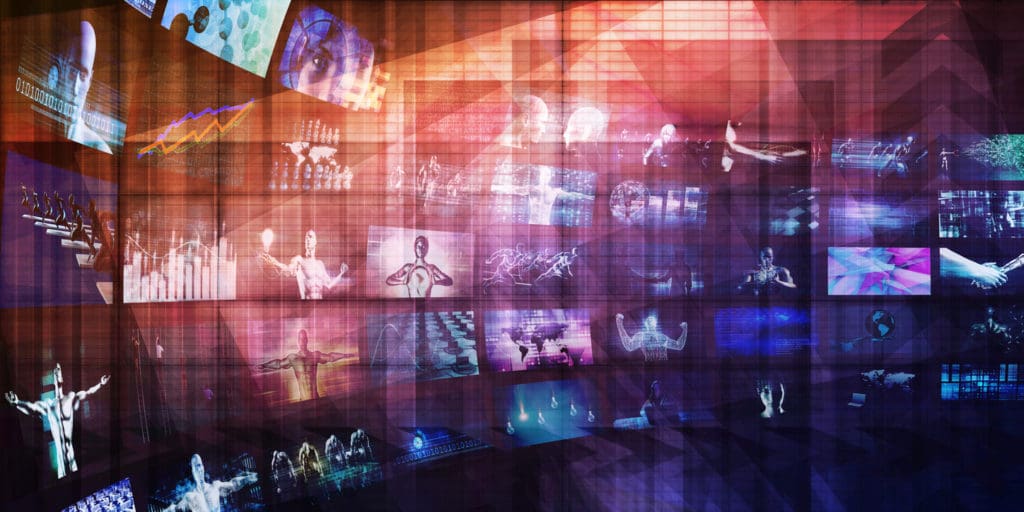
For me, it always starts with figuring out the scene that I want to use first. That's going to have to be something—and just to make it easier for me, it doesn't have to be but it can be the difference between a day or two, or a week or two. That's going to be a scene that tries to stay on a face as much as possible with consistent lighting. That's where I start getting to the political stuff because it's like a press conference. They’re facing the camera. They may look left or right a little bit.
One of the biggest problems is if somebody looks too far left or too far right, the facial recognition won't pick it up. Like your Face ID, if you're looking at it with your cheek facing the camera, it's probably not going to know that you are. That's how I do it. Then I'll go find the face that I want to replace it with. That's kind of where it takes the most time because let's say I do want to use Rowan Atkinson. I have to go through movies that I have or online interviews, or trailers—anything I can get—and kind of hodge-podge it together. It doesn't have to have audio. It doesn't even have to make sense. It just has to be a clip with all of these scenes in it.
By all the scenes, you mean a little bit of the head tilts, lips closed, and eyes closed.
Up, down, left, right—it's got to have all that stuff. It doesn't necessarily mean for these to have what's in the destination. If I have a straight-on shot of a politician, I don't need the left and right and all of that. I just need the straight on and maybe a little bit of left, a little bit up and down just for extra coverage. But if I'm going to do it, I tend to get it all that way. That way I can reuse that face set later.
Got you.
Once you have that, I do some preprocessing just to make sure that color matching and stuff like that. That again, you don't have to. The software can actually try to do that, but I found it's better to give it a good head start. I'll take it in my software and I'll just do some color matching, make sure everything's fairly consistent. Then you run it through the software—it’ll clip out the faces. It'll do facial recognition and turn everything into frames.
You have to go through and look at these frames one by one and try to get rid of blurry ones or ones where sometimes it'll think that it's a face when it's not. It’s just a curtain in the background, or it will identify a face, but it'll turn it sideways. That's just a junk frame. You can toss it. You can't do that on the destination video. You can only do it on your source, like Mr. Bean. If you do it on that, but if I'm replacing a politician, I can't do that with a politician.
You don't want eyes showing up in the curtains in the background.
No, it’d be weird. You can manually go in there and try to correct things. But usually, at that point, I'm just like, it's easier for me to just go find another clip. But that's me and I deal with more stuff than just me. Sometimes you don't have that level of authority.
Are the other software packages that allow you to do this—commercially available, free to open source, easily available?
Open source—that’s available for Linux and for Windows. Last I checked, they still don't have a Mac version. A lot of us deal with the fact that most Macs don't have Nvidia GPUs. The developer is not going to waste his time trying to keep it supported and people are going to ask questions, “Why doesn't it work on this?” Yes, you can get an Nvidia GPU on certain machines, but it's just not worth it. You would need a PC or you'd need a Linux box.
I know I've seen some defects out there done with the source material. It was an impersonator for the person that they wanted to use.
Yup, I’ve done one of those. That's always good.
It wasn't taking a well-known politician and a speech that they've done. But they were able to create the source material from scratch on something like that. It makes me wonder, do you see the day coming when deepfakes will be almost indistinguishable from real material?
Since I've been doing this for so long, my immediate gut reaction is that it's a long way off just because I know what to look for. But if you don't know what you're looking for, it's very easy to be fooled.
You know what to look for in the produced material, correct?
But if you don't know what you're looking for, it's very easy to be fooled. -Lonnie Waugh (on detecting deepfakes) Share on XCorrect. I've been looking at it for so long. I knew you were going to ask me what. But it's just that I've been looking at it for so long that I know the little nuances and things like that. It's hard to explain and it's just one of those things that you’re doing for so long, you just kind of get used to that like, “Ah, that's a deepfake.” It could just be a little blemish, or a little flicker, or just something that nobody else would notice. When the light changes or something like that, it causes a facial tip or something that's noticeably off to me.
I'm going to make a horrible comparison that hopefully won't draw flack. You see a lot of the grainy UFO videos, let's say, or the Bigfoot videos. There are those telltale signs of the angle’s not right, something overlaps incorrectly, the skin tone is suddenly off.
Yeah, it's more like that. The tone will be off. Suddenly, it'll shift because they're obviously using multiple face sets. You'll notice that maybe their faces have something from a dark setting. That somebody did a sit-down interview on 60 Minutes or something like that. It’s usually dark and comfortable. The other one is from an outside press conference in the sun. You can pick that up so quickly, though, that a lot of people won’t notice it. But I can spot those pretty quickly. For me, I will be able to tell. I would say that if I showed something like that to pretty much anybody else who's not used to deepfake, they would probably not notice the thing. Everything would be like an artifact.
Is that what they would look like to most people, just like a compression artifact?
Not even that.
Is it more subtle?
It's more subtle. You had it right with the kind of tone. It's just a flash of something different. It's just so quick. It's actually in my videos, too. It's hard to get rid of that kind of thing. It's really not worth it. As I said, I can't monetize my channels because of some of the content that I use. For me, it's not worth spending the many hours that it would take time to iron it out. But for some projects that I've done, that's something that has to happen.
I'm not going to say who or what. But I did do a music video where that's very evident. The reason that is, is because the director knew they wanted to do a deepfake. They didn't consult with a deepfake artist before they did it. They didn't know the ins and outs and what to do and what not to do. They were going from indoors to outdoors, bright light to dim light, fast movements. They did everything wrong. I've done a couple of things like that.
It's almost like it's deepfakes and the process is almost perfectly designed for politicians making political speeches inside.
Well, in my case, yeah. There are some people that are quite good at it because they actually have sponsorships. They can get free cloud computing with this massive network of GPUs. They can knock the stuff out. They can process it for much longer and get better results. I'm doing this for my own entertainment for the most part. Other than those occasional projects like a music video I've done, not commercial yet, but music videos. I've had YouTubers contact me to do stuff with them.
One of them is one I don't even mind mentioning because they actually got me started but it’s—are you familiar with the song “Schmoyoho”?
I'm somewhat familiar with it.
That's kind of where I got my boost because we did that. It was a learning process with them because they do a lot of political stuff. I made some mistakes and they made some mistakes in filming some things. You just learn as you go.
We'll make sure to include a link. I assume that’s up on YouTube currently?
Oh yeah.
We'll make sure to include a link to that video in the show notes for this.
Yeah. I'll be sure to let them know, anyway. They can have some credit. They’re amazing guys.
Cool. We’re talking about the source material having to be similar to what your destination material is. How much source material, source video, do you need to create something that even starts to become plausible?

At a bare minimum, I would say you want to get out to be 3,000 frames and you can choose the number of frames you want to export. It could be a two-minute-long video, and then you export as many frames as you think is necessary. Which, like I said, the minimum would be 3,000. I try to go around 10,000 to 15,000. It takes longer to train it, and by training, I mean the system has to go through and look at each frame over and over again and try to learn how to map on to what you're wanting it to map onto.
It's doing it both at the same time. It's learning their face and it's learning this face. It knows that this is who you’re trying to map onto. It's looking for facial similarities, and sometimes, it'll morph your source frames a little bit. For one of the politicians, I’m not naming anything, it took my character and had to expand its face a bit. You do get a little bit of that morphing there, but it's so subtle that you can't really tell.
I suppose if your source character and the face that you're trying to map them onto are similarly shaped faces, I’m sure it helps tremendously if you're trying to shift people from different ethnicities. It's not going to work on significantly different facial shapes.
The ethnicity doesn't really come into play, but the facial shape does. I've taken people of different races and I've been able to merge them into a new video. It actually worked out quite well, to my surprise. I didn't think that was going to work, but the built-in color matching that's in the system is actually smart enough to handle that. That usually works out pretty well, in my experience. If you were to try to take The Incredible Hulk and do that, you could, but there’s a lot of nuance to that because there are different models, different modes that you can work with. They each have their pluses and minuses.
You may get the coloring that you want but you might lose something else out of it. You might lose some fidelity. It could be something like that. I turned a little girl into Ron Swanson. Somebody else did the same thing. The little girl was on Sesame Street. They came after him so I took mine down. But then I later put mine back up and I just didn't advertise it. Mine still exists, I believe.
It’s always challenging as someone who's able to identify the source material.
Yeah. Well, it's quite obvious.
OK, it’s for entertainment purposes only.
Exactly. As far as I’m concerned, that would be fair use—just entertainment. But I don’t know. I don’t make those laws.
We are not lawyers here and we are not giving legal advice to anyone listening.
No. Absolutely not.
If I were a notable person and I wanted to do my best to make sure that my likeness could not be used in deepfakes, is that even a possibility?
If you're not a politician, because as a politician, you’re pretty much in the public domain. But if you’re, like, a Tom Cruise or something like that, if you have enough legal backing, you can go try to find them one by one and take them down. There's always going to be another one to pop up. It's kind of like a weed, if you take one down, you’re going to have 20 more.
The bigger point was how likely it is that non-celebrities—that there's enough source material to build a deepfake based on their face?
If they are non-celebrity?
Yes.
You could do it on a phone, but you have to have thousands of photos, you would want to have a video. Let's say somebody who was a podcaster.
No.
It would be pretty easy, especially because you're straight on. It's things like that. It would be very easy in that kind of situation. There's a lot of people who jump on YouTube and YouTube stars. If I want to do something like that, I could. As your average Joe, I'd have to have something, and I couldn't just have a few pictures or something like that. There'd have to be a pretty decent-size video or something like that. It will also have to be of decent quality. There's not a lot of high-quality videos of stuff like that around, I guess.
Particularly, if you're trying to do something more than just put their face on somebody else's body. The thing that people fear is that combination of getting someone who is a close physical resemblance of who they're trying to impersonate and they can do a good voice impersonation. Now they can go around and walk, and talk, and say things, and overlay the real person's face on them and it becomes a lot more indistinguishable. To you, it's probably noticeable but I think to a lot of people it becomes not noticeable. Is that really who it looks like?
There are actually people who would do that. I'm not going to tamp any social network here, but there's actually an app that does it. It looks very good, but it's jittery and it's very obviously not them. But they do have a very well-known person who’s a great impressionist and he does it all the time. You could say he's a little bit of an over actor, but something like that is theoretically possible. If he knew how to use the software I use and did the same thing to a better effect, he can easily probably fool somebody.
I think that's what people are ultimately scared of when they start seeing things. If it's a celebrity’s face on a politician, you’re like, “Oh, hahaha. That's funny.” But they fear that at some point there is someone going to produce a video of me saying something inappropriate and I'm going to lose my job over it.
Very unlikely, unless you're posting videos of yourself all over the place with proper lighting, that kind of thing. But I mean, that's becoming more and more of the thing, is people start posting on social media—video, these little 50-second video clips. They add up over a while. If somebody keeps posting and posting, those can be clipped together. Then you have a face and then that face can be used to create a deepfake. If you had somebody who was able to do an impression of a person that you're trying to do that to, there's a lot of work involved in getting all that done. It better be a worthwhile goal, I suppose.
A worthwhile venture. It's not the sort of thing where someone's going to take a video of their neighbor and try to blackmail them for a few thousand dollars.
No.
That's not going to be the reality for many years.
Your temper is going to be worn off at that point. After you spent three or four weeks trying to get this thing together, you’ll be like, “Ah, forget it.”
I suppose that's the good news, is that while convincing ones can be made of celebrities, the amount of work that currently has to go into it is pretty extensive.
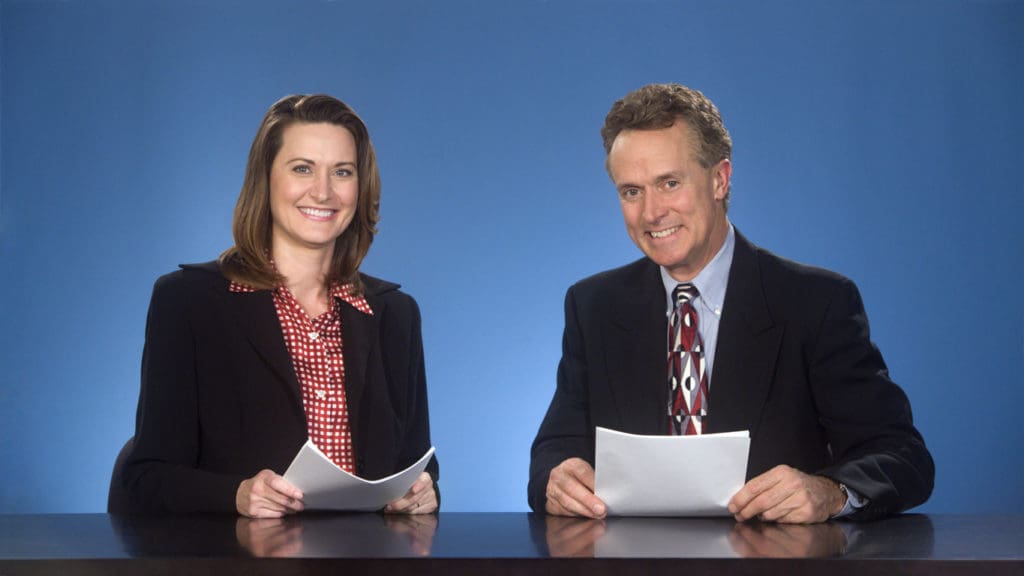
Yeah, it is. You have to have the hardware and the hardware is pretty expensive right now. GP shortages and things like that.
Yes.
Again, I say that as of today, the deepfake technology has gone leaps and bounds in the past three years. So who's to say? There is software that does deepfakes with a single photo, but they're not believable at all. It's just like somebody's taking a photo and morphing the photo to match a mouth movement. It's more of a goofy thing than anything else.
It looks more like a celebrity face in an old-time video game.
It looks like somebody just basically took a picture and then shoved their face through it. It's just moving it around like it's made out of rubber or something. It's just a very weird effect.
Yeah. No one's going to mistake that for the real individual.
No. The only purpose it has is for comedy. People are making them sing goofy songs. Beyond that, it's useless.
The thing that I see coming up and, hopefully, it's far enough in the future that there'll be other ways to prevent it from then before that happens, is like romance scammers who are pretending to be somebody notable. They’re not a major celebrity but they're pretending to be someone who's somewhat well-known or kind of well-known.
They could be looking at pulling video from a low-budget but well-shot movie coming up, an incoming actor that nobody's ever heard of. I'm sure I could see something like that. There was one guy—because he thinks he looks like Ryan Reynolds, I didn't trust it—but he wanted Ryan Reynolds’ face mapped onto him. I was like, “Yeah, you can find somebody else to do that. I'm not interested.”
Because there was a CEO that I had to interview that his likeness was being used for romance scams. Historically, when I've talked to people who think they're dealing with someone who's scamming them, it’s like getting on a live video chat and you'll know right away because they're not going to get on a video chat with you. He and I were talking about that. What he said is that as some of these scammers—because he had been on television news and he did a podcast and he did some video stuff—the scammers would play the video with the audio turned off. They'd start and stop the video, start and stop the video. Finally, they go, “You know, I have a bad internet connection.”
There's a YouTuber—it’s kind of related because he does the same thing, or used to, but not for romance scams. He would take video clips and loop them—just an attractive person. These clips are usually given to him and then the thing that he did is when people were really getting interested, and looking at this, he will then flash up like a horror scene just to try to scare them. But it’s the same kind of thing.
Actually, what’s funny is, it’s not really funny, but they have an avatar system where you can have a celebrity’s face or something like that. But these are celebrities that agreed to this kind of thing. I don’t think they’re really big celebrities. It maps to your face. They are your avatar. You would look like them. It’s convincing enough because it does slow it down. It’s like a bad internet connection kind of thing. There is that.
They do have some that people are working on where you can make your own, like a deepfake. You train it and then it actually does real-time processing. It’s not perfect by far. But people are trying to do it.
The scary thing is at some point in the future, we’re not going to know who we’re chatting with online.
There is a lot of thought being put into that as far as legislation, social networks, and things like that, where they’re talking about, at least, in the political world, having some sort of embedded watermark that you cannot detect so that they’ll know if this is an official video or not. If it doesn’t have that watermark, you know that it’s a deepfake or something. It’s been digitally modified in some way.
At least there’s cause for concern and it should not necessarily be taken for face value.
Right, 100%.
Hopefully, this is in many, many years out.
There is a lot of abuse of the technology, but I haven’t seen it in that way. Not in the ways that you’ve brought up.
That’s good to know that you haven’t seen that that is an ongoing issue and, hopefully, it won’t be for a while.
The way it’s been abused is predictable. You could get into that. That’s one of the main problems.
Yeah. A lot of those. If celebrities' faces are being put on porn stars and things like that, there’s hopefully good legal recourse for addressing those issues currently.
I would hope so, or at least they’re being worked on. When it comes to that, one of the big concerns was a girlfriend-revenge porn type of stuff. Taking your ex-girlfriend—you recorded a video, chat, or something like that—and then you guys split up. Now you’re putting their video all over the place and getting them in trouble. As a matter of fact, I think there was a case that went to court recently of a mother who did something like that or had something like that done to try to get this other girl kicked out of college. Do you know what I’m talking about?
I don’t remember the specifics of the case, but there was a case where the mom got involved. It went south really bad.
For some reason, I was thinking it had something to do with that. But I could be wrong.
Yeah, those, unfortunately, exist out there.
As we wrap up here, if people want to find your deepfake videos, where can they find them?
Instagram, @oneduality. I’ve been on there for a long time. Youtube.com/oneduality, instagram.com/oneduality. I took the Facebook account down because I wasn’t using it, but also TikTok and that’s 1duality
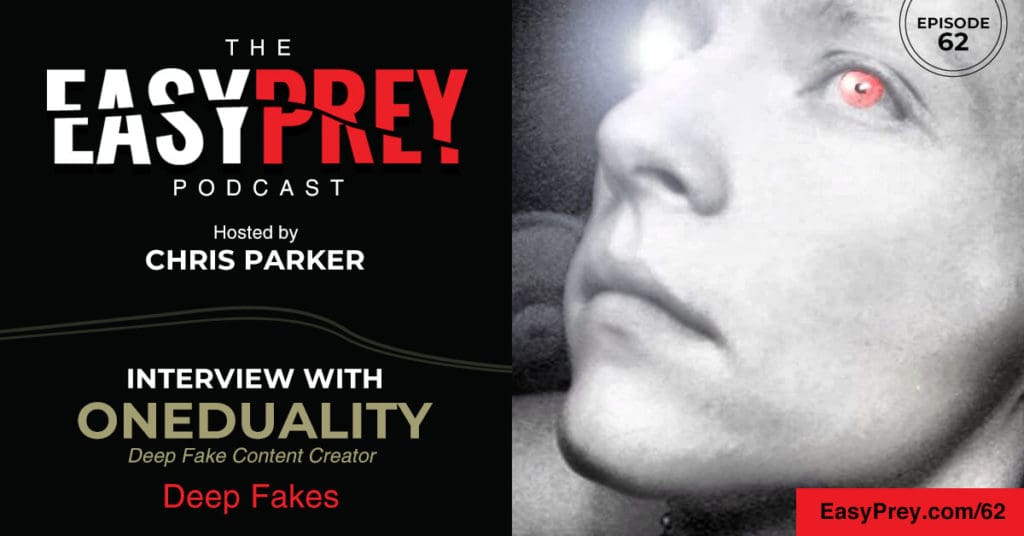

This is Lonnie’s Mother, Lonnie passed away April 24th, after his 2nd covid shot. We are in shock, since he had such a bright future , ahead of him. Thank you for interviewing him, he enjoyed doing it.